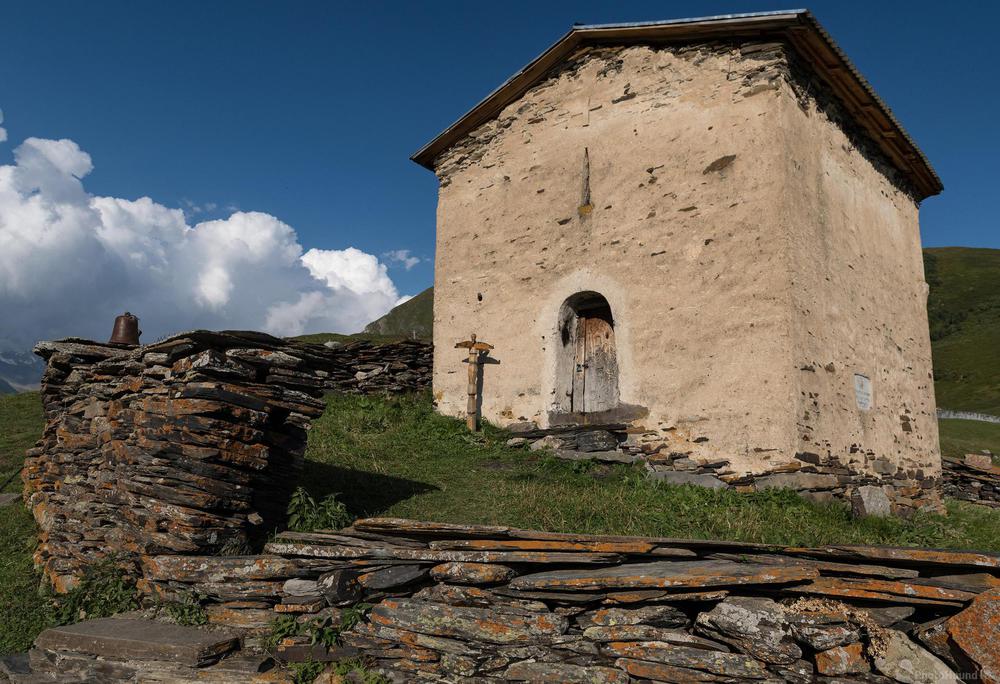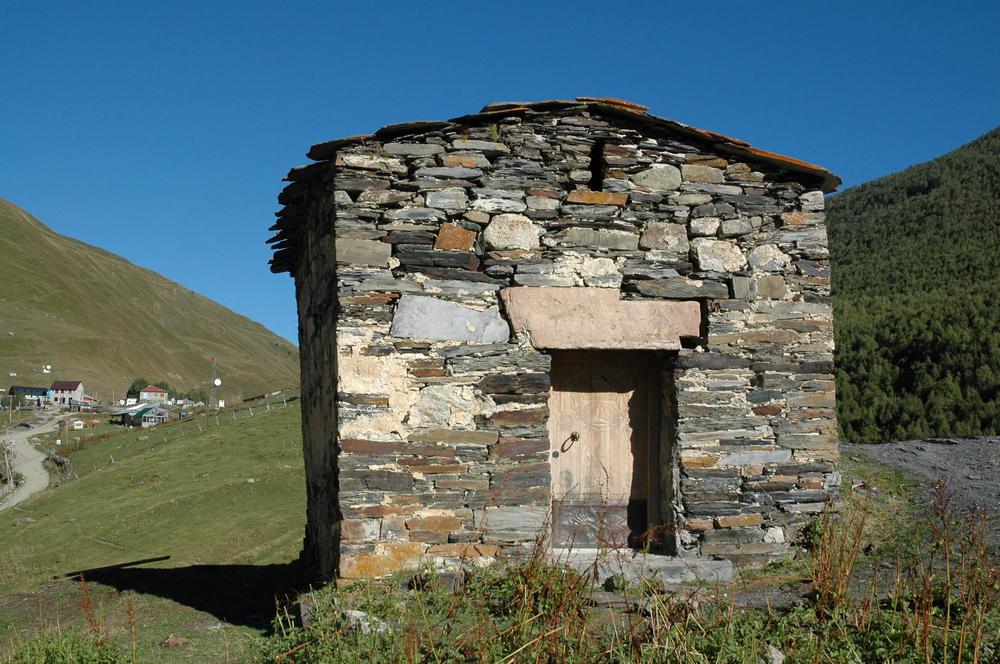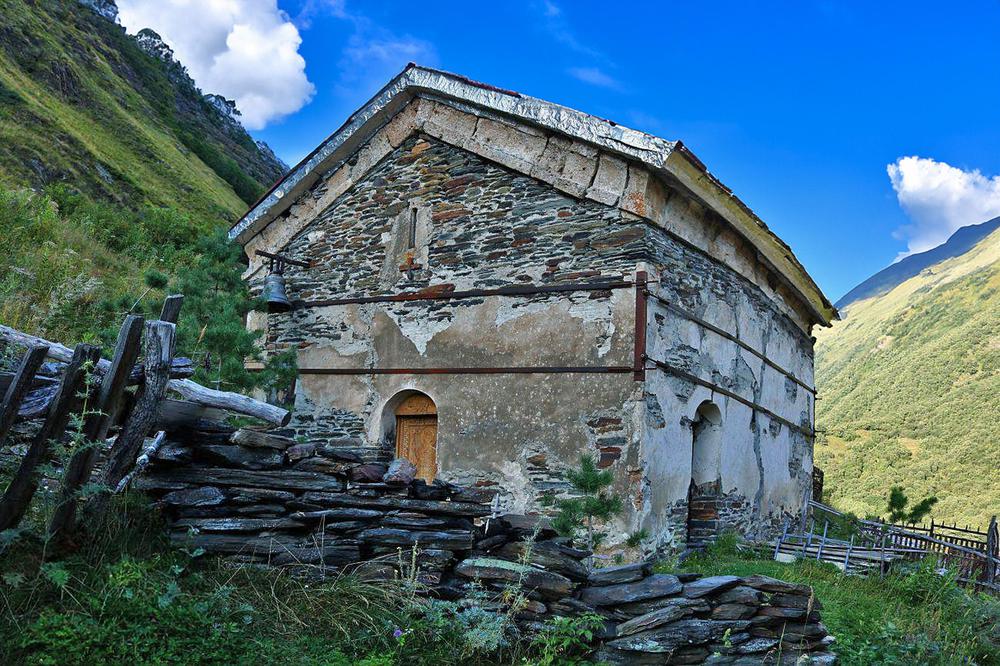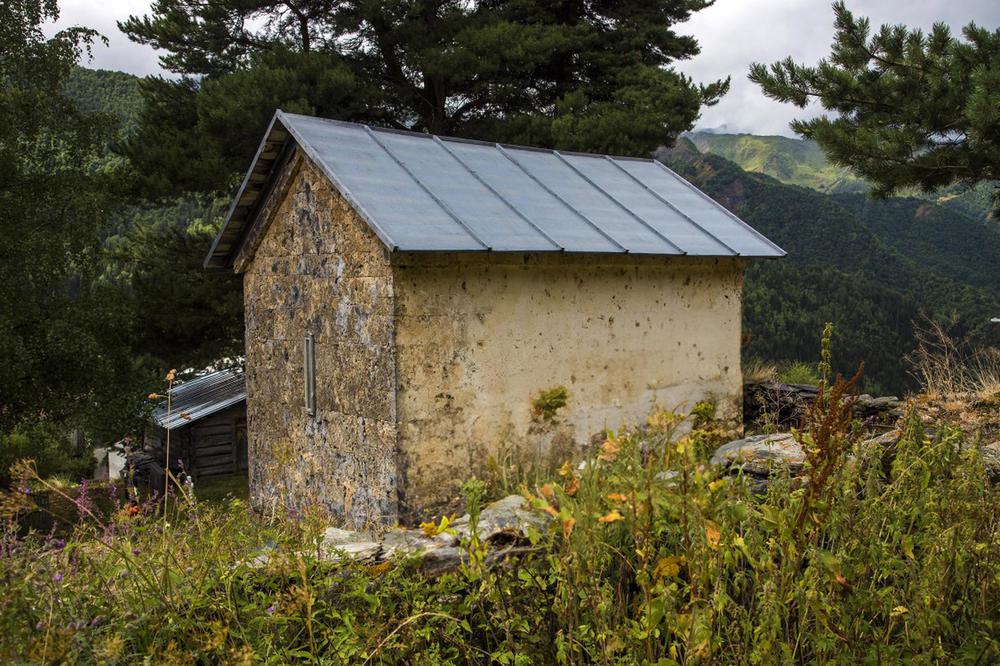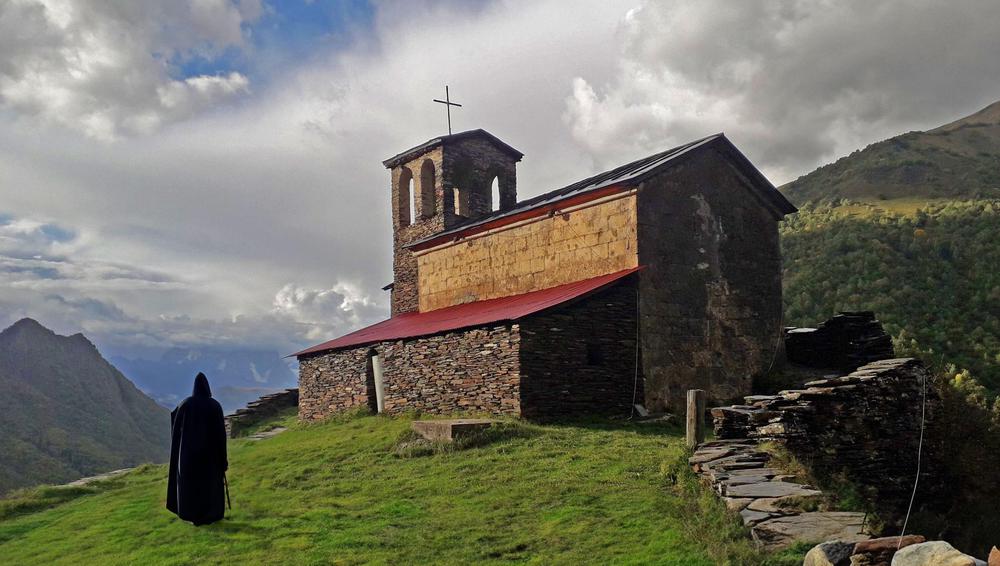Located in Ushguli, the Ushguli Ethnographic Museum stands as a testament to the ancient customs and traditions of Svaneti. The museum itself is housed in a machubi, a 13th-century Svan-style limestone structure, which offers an authentic representation of the lifestyle of the locals in the past.
A machubi was not just a dwelling; it was a way of life. It served as a communal space during the cold winter months, accommodating both humans and livestock. The two species were separated by a wooden board known as a “gvali”. These two-story, domed homes were crafted from stone and wood, with a tamped dirt floor and decorations that exuded both artistry and religious significance.
Inside the museum, the second floor exhibits ancient wooden beds, a domed space for goats and sheep, an old hearth, and a "bojari" (oven) with kitchen utensils. You'll also find an antique slate cellar, a Svan cradle, and a 1,700-year-old Svan weaving loom - a unique relic that has survived till today.
The museum provides an opportunity to learn more about the Svan lifestyle and the customs associated with a machubi. A variety of ethnographic materials are on display, ranging from weapons, agricultural tools, and religious objects to ancient wooden furniture and everyday items made of iron and clay.
Furthermore, the museum holds a collection of artifacts unearthed from numerous archaeological excavations in Svaneti. These include unique examples of Georgian metalwork, iconography, and writing, each offering a piece of the rich historical puzzle of the region.
Exploring the Ushguli Ethnographic Museum is akin to stepping back in time, appreciating the resourcefulness and resilience of the Svans, and recognizing the bond between people and their environment in the past. The ingenuity of the ancient Svans will leave you with a profound sense of gratitude for the comforts of the modern era.


